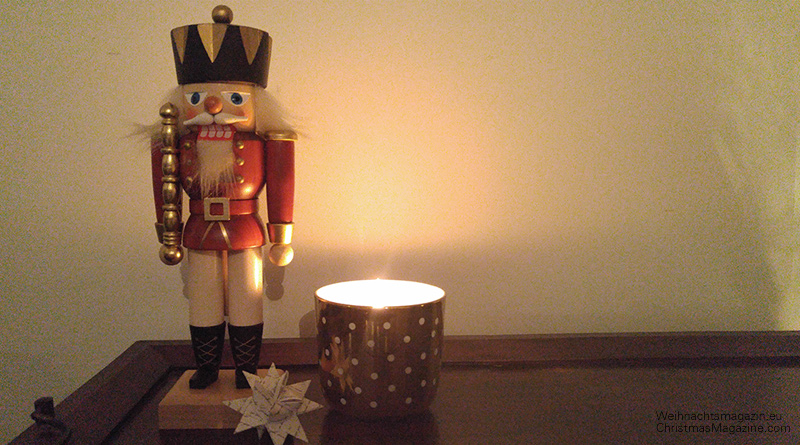The Legend of the First Nutcracker
Long ago there lived a very rich, but very miserly and lonely farmer. This farmer had walnut trees all over his property, but he had no time to crack the shells to get at the meat inside. Because he had no time for such foolish actions, he offered a prize for anyone who could come up with an easy way to crack the walnut shells. One day an old puppet carver came to the farmer’s home with a beautiful brightly painted puppet. The puppet had a large mouth and strong jaws- strong enough and big enough to crack the walnut shells. That was how the first nutcracker was made.
* * *
Nutcracker dolls originate from late-17th century Germany, particularly the Ore Mountains (German: Erzgebirge) region. One origin story attributes the creation of the first nutcracker doll to a craftsman from Seiffen. They were often given as gifts, and at some point they became associated with Christmas season. They grew in popularity around the 19th century and spread to nearby European countries. As the demand grew, nutcracker doll production also began on a mass scale in factories. Friedrich Wilhelm Füchtner (1844-1923), commonly known in Germany as “father of the nutcracker”, began the first mass production of the design (using a lathe) at his workshop in Seiffen in Saxony during 1872.
Decorative nutcracker dolls began being popularized outside of Europe after the Second World War, when numerous American soldiers stationed in Germany came home to the United States with German nutcrackers as souvenirs. Further popularization came from Pyotr Ilyich Tchaikovsky’s The Nutcracker, a ballet adaptation of E.T.A. Hoffmann’s story The Nutcracker and the Mouse King, which featured a toy soldier nutcracker. The ballet, introduced to America during the mid-20th century, became a favorite holiday tradition across the United States and helped make nutcracker dolls a Christmas decoration and a seasonal icon across Western culture.
An average handcrafted nutcracker doll is made out of about 60 separate pieces. Nutcracker dolls traditionally resemble toy soldiers, and are often painted in bright colors. Different designs proliferated early; by the early 19th century there were ones dressed as miners, policemen, royalty or soldiers from different armies. More recent variations have been made to resemble various pop-culture or historical figurines, from Benjamin Franklin to Operation Desert Storm-uniform American soldiers.

